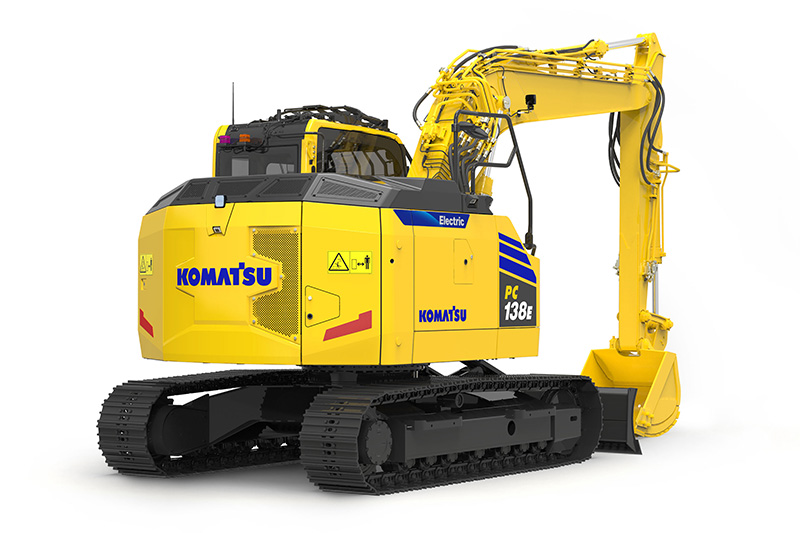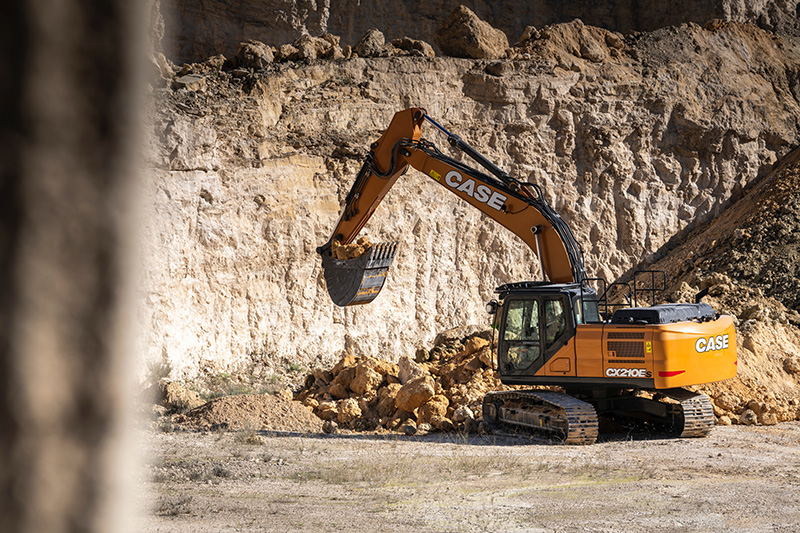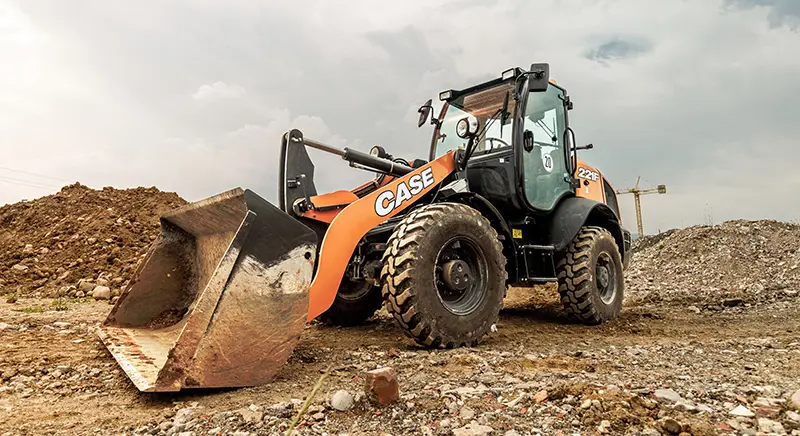
LEADING construction equipment manufacturers Komatsu and CASE have been revealing details of their latest respective product releases.
Komatsu’s new all-electric 13-ton class PC138E-11 excavator is destined for domestic and European markets early this year. The model will feature a 225-kWh lithium-ion battery for long hours of operation and is being viewed by the firm as ‘a step toward the establishment of a market for electrified construction equipment with an eye to achieving carbon neutrality by 2050’.
By equipping a high-capacity lithium-ion battery and integrating a cooling system for the battery and electric components, Komatsu claims to have achieved ‘a long operation time while reducing the rear-end swing radius’.
Komatsu revealed it is working to have a variety of customers – with different operating conditions and power supply sources – use the PC138E-11 as a rental model. Stats include 0.50 cubic metres bucket capacity, 7,970mm length, 2,490mm width, 3,005mm height and 1,830mm tail swing.
Meanwhile, Komatsu Europe has announced the launch of the new PW168-11 and PW198-11 short-tail wheeled excavators. The models expand the range of options in the 16-20t operating weight class. Komatsu described the machines as ‘compact and easy to transport, powerful, comfortable, versatile, reliable and durable’.

With a low transportation height of 3.1m, transport on standard low-bed trailers with a loading height of up to 4m is possible. The short rear overhang of 1.85m (PW168-11) or 1.9m (PW198-11) is said to be ‘ideal’ for narrow construction sites.
The excavators are equipped with four-cylinder Komatsu diesel engines (110kW or 129kW), which meet current EU Stage V emissions standards and are factory supplied with HVO diesel fuel as standard. Komatsu added that the machine design with ‘optimised’ boom and rear engine enables ‘enormous’ lifting performance to move heavy loads easily.
The cab boasts a new premium seat with multi-stage ventilation and seat heating. Important functions can be operated via the joysticks, and all-round visibility is supported by four cameras with a bird’s eye view as standard. The new models are prepared for use with a tiltrotator as well as for 3D guidance systems.
Elsewhere, CASE Construction Equipment has announced the addition of a second 20-tonne class crawler excavator to its E-Series line- up. The CX210E-S is the ‘Essential’ alternative to the regular CX210E, retaining the performance, operator comfort, quality and reliability of the standard model, but with a ‘simplified offer at an increasingly competitive price point’.

The machine is powered by an identical FPT NEF6 Stage V diesel engine. It uses a heavy-duty version of the lower frame, with an LC undercarriage with reinforced components. The track frames have a single-track guide, and triple grouser steel shoes are available in 600mm heavy-duty, or 700mm widths.
CASE explained that the excavators feature a heavy duty mono boom and a single, equally heavy-duty 2.94m dipper arm option. The CX210E-S comes factory-fitted with standard quick coupler circuit and high-flow multifunction auxiliary hydraulics, with a low-flow circuit also available.
The cab boasts a pneumatic and heated seat with suspended joystick consoles, 10″ display with integrated A/C and five configurable buttons, a Bluetooth radio, an LED light package, and a FOPS Level 2 top guard.
The E-S model is around 500kg heavier than the CX210E, due to the heavy-duty build of its front-end equipment, lower structure and undercarriage, and it can be boosted by another 500kg by selecting an optional counterweight to better manage heavier attachments.
CASE has also announced an update of its compact wheel loader line, with the launch of four F-Series Evolution models. The 21F, 121F, 221F and 321F machines are all said to benefit from increased travel speeds and an upgraded cab incorporating a revised monitor, electro-hydraulic controls with smart features, and a range of connectivity applications previously only seen on larger models.

The two larger models are available with a choice of travel speed ratings, 20kph in standard trim and an optional 40kph for customers looking to move rapidly between sites. CASE said that when combined with optional Ride Control arm suspension, the higher travel speeds also deliver increased productivity in load and carry operations, where machines are rapidly transferring material to a loading or stocking area.
The larger models have new modular axles, available with limited slip or 100% locking differentials for ‘maximum traction’ in difficult terrain. They feature multi-disc wet brakes with a hydraulically-released parking brake.
Evolution wheel loaders have an Eco drive mode, limiting engine revs to 1,700rpm for reduced fuel consumption and lower exhaust emissions. While operators might expect a drop in productivity in Eco mode, CASE explained that engine speed regulation and variable hydraulic pump displacement results in ‘impressive’ performance. Indeed, CASE recommends operators set the machines to run in Eco in regular daily operation to achieve ‘optimum productivity and efficiency’, unless maximum power is required for attachments or increased breakout force.
There are two cab interiors on offer, both featuring ROPS and FOPS level 2 protection as standard. The Deluxe cab includes additional storage spaces around the seat, with full height adjustment for the steering wheel and an adjustable wrist rest.



